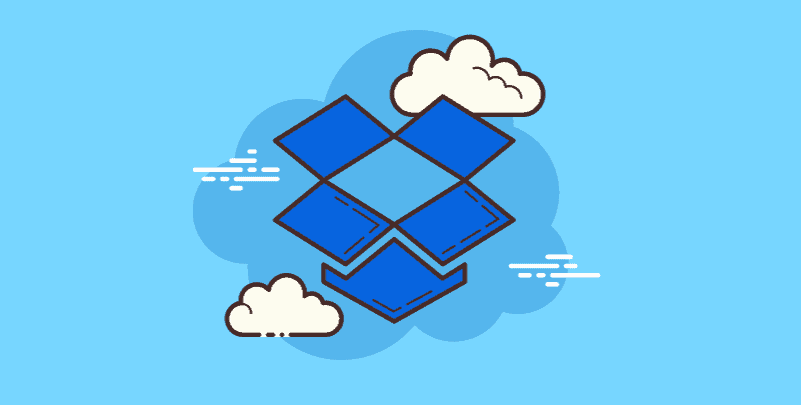Introduction
In the current digital era, a lot of people consider cloud storage services like Dropbox to be indispensable. They provide a practical means of storing and retrieving files from any location with an internet connection. What occurs, though, if Dropbox stops meeting your needs? It is plausible that you have shifted to another cloud storage provider or are only attempting to free up some space on your desktop. For whatever reason, it's easy to uninstall Dropbox from your PC.
This tutorial will teach you how to remove Dropbox from both Mac and Windows computers. We'll cover how to uninstall the desktop application in this guide, as well as how to delete the local Dropbox folder that holds your synced files if necessary.
Uninstalling the Dropbox Desktop App (Windows & Mac)
1. Uninstalling Dropbox on Windows PCs
On Windows computers, there are two main ways to remove Dropbox: either the Control Panel (for previous Windows versions) or the Settings app (which is advised for Windows 10 and later).
Uninstalling via Windows Settings:
Step 1. Select Settings from the Start menu by clicking on it.
Step 2. Within Settings, select Apps.
Step 3. In the list of installed applications, locate Dropbox.
Step 4. Click on Dropbox and then select the Uninstall button.
Step 5. To finish the removal procedure, adhere to any on-screen instructions.
Uninstalling via Control Panel (for Windows 7 and 8):
Step 1. Locate and open the Control Panel on your Windows machine. To open the Control Panel, type "Control Panel" into the Start menu search box.
Step 2. Locate Programs and Features in the Control Panel.
Step 3. Locate Dropbox in the list of installed programs.
Step 4. Click on Dropbox and then select Uninstall.
Step 5. To finish the uninstallation, adhere to the on-screen directions.
2. Uninstalling Dropbox on Mac
On a Mac, uninstalling Dropbox is equally easy. This is what you must do:
Step 1. Open Finder on your Mac.
Step 2. Navigate to the Applications folder.
Step 3. Locate the Dropbox application icon.
Step 4. Drag and drop the Dropbox icon to the Trash.
Step 5. Empty the Trash by right-clicking on the Trash icon in your Dock and choosing Empty Trash to fully remove Dropbox.
Removing the Dropbox Folder (Optional)
The local folder that holds your synchronized data is automatically preserved upon uninstalling the Dropbox desktop application. This folder follows your username and is often located in your user directory (C:\Users\YourUsername\Dropbox on Windows, or /Users/YourUsername/Dropbox on Mac).
Important Note: Before deleting the Dropbox folder, consider the following:
- Do you have a backup of your files? Your files remain on Dropbox servers even after you uninstall the program. Nevertheless, your PC's copy will be destroyed if you remove the local folder. Before continuing, make sure you have a backup of any important files.
- Are you sure you don't need the files anymore? Upon erasing the Dropbox folder, those files will be inaccessible on your computer.
If you've decided to proceed with deleting the Dropbox folder, here's how to find it:
- Windows: Open File Explorer and navigate to your user directory (e.g., C:\Users\YourUsername). Look for a folder named Dropbox.
- Mac: Open Finder and navigate to your user directory (e.g., /Users/YourUsername). Look for a folder named Dropbox.
Once you've located the folder, you can delete it manually:
- Windows: Right-click on the Dropbox folder and select Delete.
- Mac: Drag and drop the Dropbox folder to the Trash. To empty the trash, right-click on the Trash icon in the Dock and select "Empty Trash." This will permanently remove the folder and everything within from your computer.
Remember: Deleting the Dropbox folder will only erase your local copies of the data. As long as you haven't erased them from the Dropbox servers or gone over your storage limit, you can still view your files online using the Dropbox website or mobile app.
Conclusion
The methods listed above will enable you to effectively uninstall Dropbox from your computer. It's simple to uninstall the desktop application, and you can choose whether to preserve a local copy of your files or not by removing the local folder. Prior to erasing the Dropbox folder, don't forget to backup any important files and think about the consequences of interrupting the synchronization process.
This guide should equip you with the knowledge required to make informed decisions about managing Dropbox on your PC. Now, go forth and declutter your digital space with confidence!
Bonus Tip: Best Way to Move Dropbox Data to Other Cloud Services
Moving your Dropbox data to other cloud services can feel overwhelming, but it doesn’t have to be! Whether you’re looking to free up space or simply want to organize your files across platforms, finding the best way to manage this transition is key. Enter MultCloud, a powerful tool designed to simplify cloud data management. With its user-friendly interface, MultCloud allows you to seamlessly transfer files between Dropbox and other services without the hassle of downloading and re-uploading. Plus, it offers features like scheduled transfers, data syncing, and a centralized dashboard, making it the ultimate solution for anyone looking to streamline their cloud storage experience.

- Offline Transfer: Don't rely on the network connection, but use the data traffic for backing up cloud files.
- Direct Transfer: Don't go through the local storage, but directly transfer files across different clouds online.
- Auto Transfer: Transfer data regularly without having to manually initiate each transfer task.
MultCloud Supports Clouds
-
Google Drive
-
Google Workspace
-
OneDrive
-
OneDrive for Business
-
SharePoint
-
Dropbox
-
Dropbox Business
-
MEGA
-
Google Photos
-
iCloud Photos
-
FTP
-
box
-
box for Business
-
pCloud
-
Baidu
-
Flickr
-
HiDrive
-
Yandex
-
NAS
-
WebDAV
-
MediaFire
-
iCloud Drive
-
WEB.DE
-
Evernote
-
Amazon S3
-
Wasabi
-
ownCloud
-
MySQL
-
Egnyte
-
Putio
-
ADrive
-
SugarSync
-
Backblaze
-
CloudMe
-
MyDrive
-
Cubby
